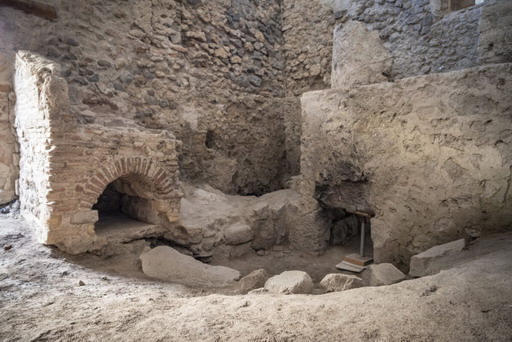New discoveries at Pompeii: private bath with lead plumbing and boiler room
Last January 17 the archaeological site of Pompeii published its new excavations of a bath belonging to a large wealthy house in the middle of the town. The bath has all the traditional Roman features, like a changing room, a vast cold water pool, a tepid room and a hot room with a small pool with hot water. The amazing thing is that the technical provisions of this bath have been excavated nearly intact: the lead pipes to transport the water and the bronze taps to regulate it are all in place. Additionally, the stoker’s room, the room where hot air was produced to enter the voids underneath the bath rooms and to warm these very rooms, has been preserved rather well. In the stoker’s room also water was heated for the hot bath with help of a fire and a round lead boiler. Though the boiler itself has not been preserved, a lead rectangular distribution basin, together with lead pipes and many bronze taps, were still in place when the archaeologists dug up the room.
See for more information:
New discoveries at Pompeii: private bath with lead plumbing and boiler room
Last January 17 the archaeological site of Pompeii published its new excavations of a bath belonging to a large wealthy house in the middle of the town. The bath has all the traditional Roman features, like a changing room, a vast cold water pool, a tepid room and a hot room with a small pool with hot water. The amazing thing is that the technical provisions of this bath have been excavated nearly intact: the lead pipes to transport the water and the bronze taps to regulate it are all in place. Additionally, the stoker’s room, the room where hot air was produced to enter the voids underneath the bath rooms and to warm these very rooms, has been preserved rather well. In the stoker’s room also water was heated for the hot bath with help of a fire and a round lead boiler. Though the boiler itself has not been preserved, a lead rectangular distribution basin, together with lead pipes and many bronze taps, were still in place when the archaeologists dug up the room.
See for more information:


